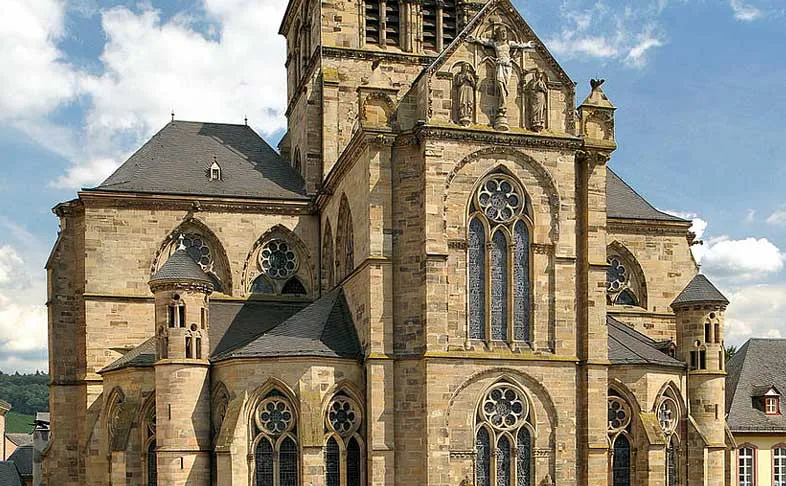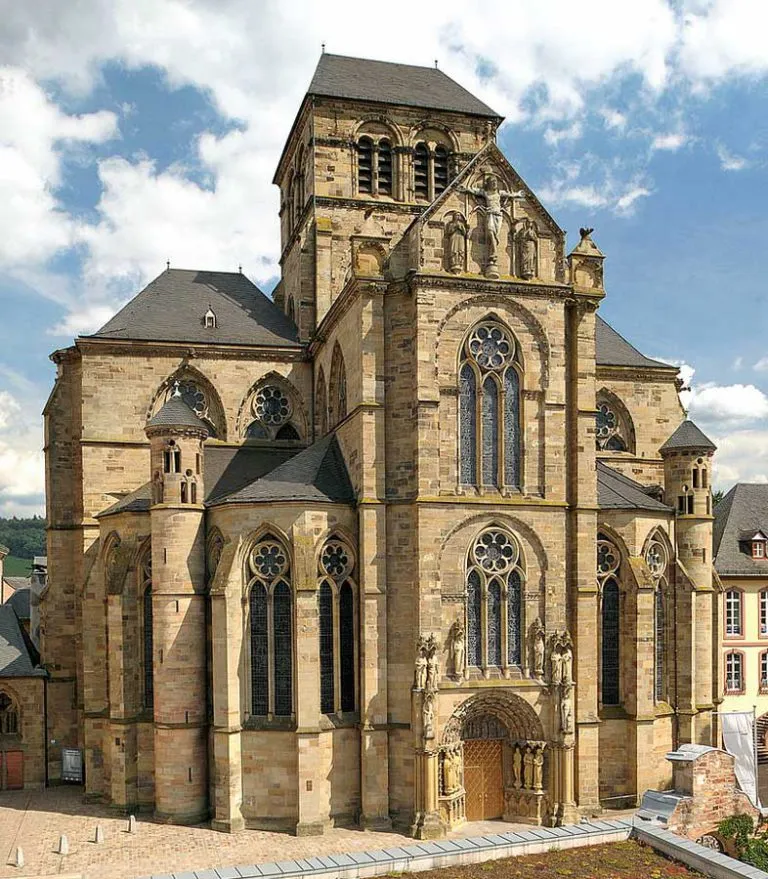
Introduction
The Church of Our Lady in Trier is located right next to the Trier Cathedral in the center of the city. Together with the Elisabeth Church in Marburg, it is the oldest Gothic church in Germany and the most important and earliest central Gothic building in the country.
Since 1986, the Liebfrauenkirche has been part of the UNESCO World Heritage Roman Monuments, Cathedral and Liebfrauenkirche in Trier.
After the ancient double church complex from the time of Emperor Constantine the Great had to be demolished after a thousand years due to dilapidation, Archbishop Theoderich von Wied began building the church. Here, the foundations of the previous church were partially used. The exact date of the start of construction can no longer be determined, a painted (later created) inscription on a pillar inside reads: “The construction of this church began in 1227 and ended in 1243”, but today it is assumed that construction began 1230 off.
Master builders and artists from Champagne and Île de France were involved in the construction significantly involved in the 13th century. This brought out the Gothic, the dominant architectural idea of the period, which was already highly developed in France. The building is one of the earliest German testimonies of the Gothic period and is also one of the rare central buildings of this period. The floor plan is based on squares from which only the chancel stands out and surrounded by eight chapels. Twelve columns support the building, symbol of the twelve apostles.
Half was completed by about 1243, but then the Chapter of Our Lady ran out of funds. This could be related to the death of Archbishop Theodoric, since he is to be regarded as a sponsor. Only after a collection in the diocese of Cologne in 1243, approved by Archbishop Konrad von Hochstaden and favored in a letter of indulgence, could the construction of the Church of Our Lady continue. In this document, the church is already referred to as the “mother church” of all churches in the Trier province.
History of Liebfrauenkirche, Trier
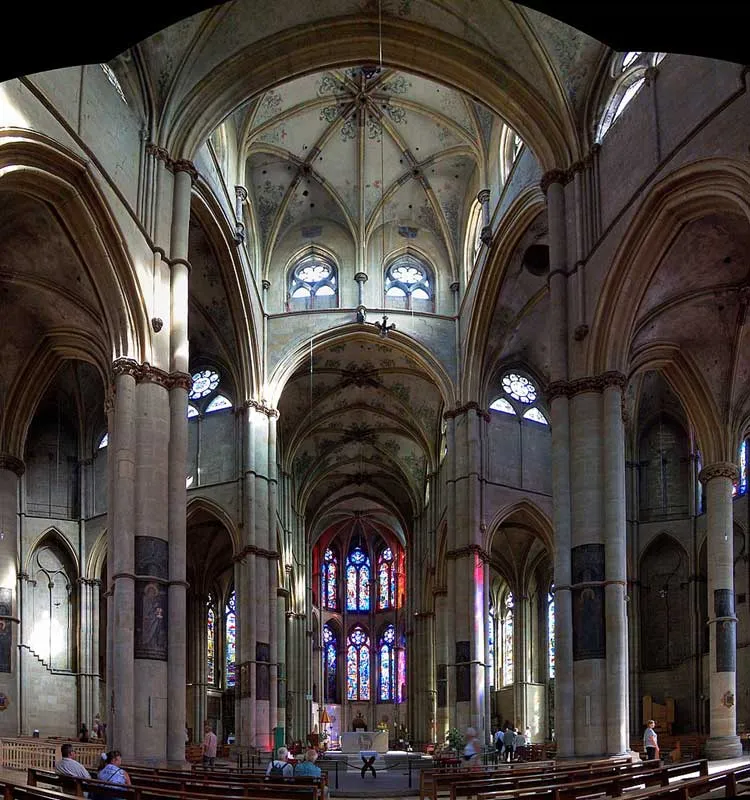
Construction was probably completed around 1260. In 1492 a high spire was placed on the crossing tower, which because of its high degree of technical and craft perfection as Daedali arte (with the art of Daedalus) was designated. The high pinnacle can be seen in ancient cityscapes, but was destroyed in a storm on Visitation Day (July 2nd) in 1631. A hipped roof was placed on top of it, which burned down during World War II . A new one was put on as early as 1945, the steel roof truss of which was rebuilt in 2003 so that it again corresponds to the pre-war condition.
The rich figurative decoration of the west facade and especially the west portal can probably be dated to the middle of the 13th century. The tympanum shows in the middle the enthroned Madonna with the child Jesus, the feet placed on the dragon symbolizing evil. On the left of the picture to their right, the three Magi, the wise men from the east, pay homage to the child, and on the far left the shepherds are shown, who were the first to hear about the birth of the Redeemer.
The scenes on the right show the presentation of Jesus in the temple and the massacre of the children in Bethlehem. The arcades contain figures of angels with liturgical utensils, above them figures of bishops, church teachers, kings playing music and figures of the wise and foolish virgins from the Gospel parable of the wedding and judgment.
Perhaps the most appealing work of art inside the church is an enthroned Madonna and Child in the last chapel on the left to the east. It is a mid-14th century carved wooden sculpture on a neo-Gothic altar. She is said to come from the Ahrweiler area.
The Church of Our Lady was used by the members of the cathedral chapter to say their daily mass and also served as their burial church. As a result, over the centuries it has become literally overloaded with tombs. Most of these tombs were removed during the French Revolution. However, a number of important funerary monuments have been preserved in the church to this day, others such as the tomb of Archbishop Jakob I von Sierck or the cathedral dean Christoph von Rheineck are now in Trier’s museums.
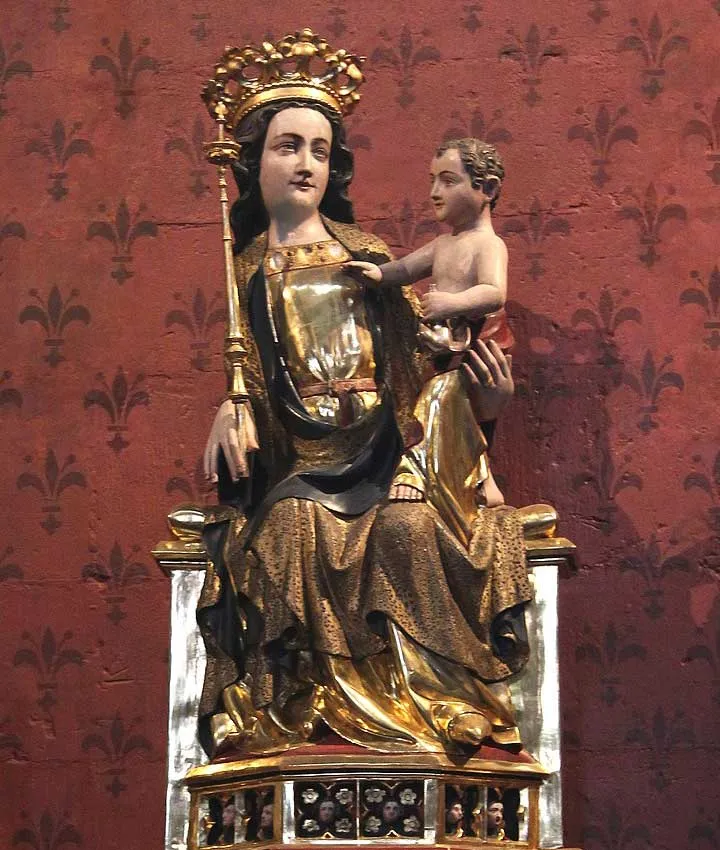
19th Century
After Trier was occupied by the French revolutionary troops in 1794, Liebfrauen was separated from the cathedral in 1803 in terms of organization and liturgy. Previously there was a close relationship between the Cathedral and Liebfrauen. Over the course of a year, numerous processions led from the cathedral into the Liebfrauenkirche; there is also a passage that connects the two churches.
According to a Trier tradition, the Church of Our Lady was to be demolished, but the Mayor of Trier, Napoleon, on the occasion of his visit to Trier, had Kesselstatt on the balcony of the opposite Palais Kesselstattand said to him: “Sire, surely you do not want to demolish the masterpiece of a French architect”. In any case, the nearby church of St. Laurentius, which was located directly next to the Constantine Basilica, was demolished and the parish was given the name “Our Lady and Saint Laurentius”.
As an external sign of separation, the portal between the paradise , which was used jointly by the cathedral and our dear women, was walled up on the cathedral side and the paradise used as a sacristy for our dear women. On the occasion of the Holy Rock Pilgrimage, the portal was reopened in 1959, then closed with a wooden door and after the cathedral restoration was fitted with a new wooden portal, so that it can be used together again today.
An extensive restoration took place from 1859 with interruptions up to the 1890s. The aim was to restore the church to its medieval condition as far as possible. Accordingly, some baroque furnishings were replaced by neo-Gothic ones, including a high altar designed by the Cologne cathedral master builder Vinzenz Statz and above it two altarpieces by the history painters Bruno Ehrich and Wilhelm Döring. A neo-Gothic organ gallery was installed above the west portal and the windows were given new, colored glazing.
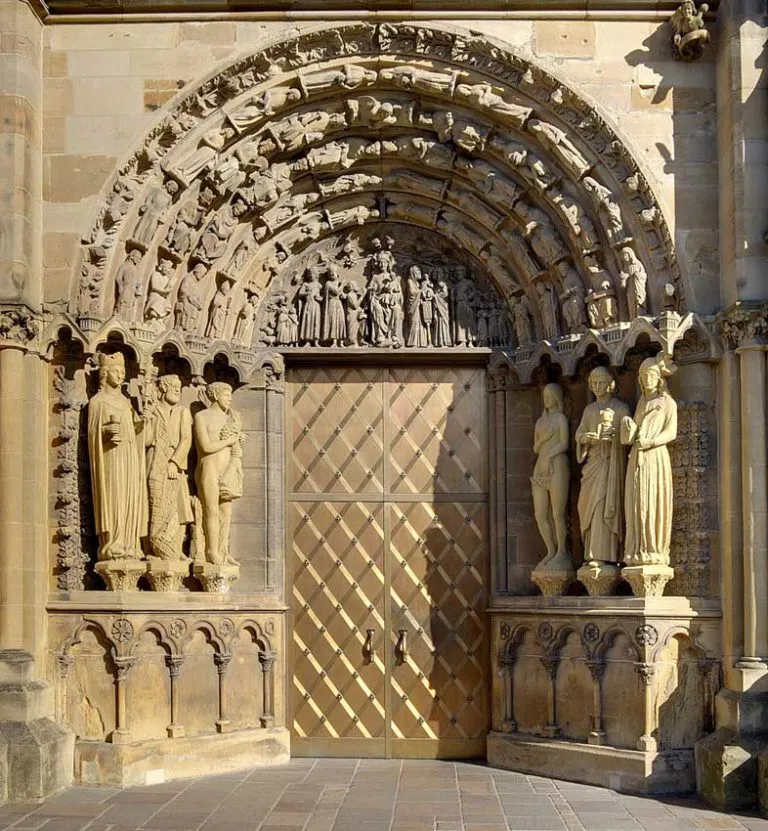
After World War II
During the Second World War, the Liebfrauenkirche suffered severe damage and was restored between 1946 and 1951. In addition to the roofs, large parts of the masonry, the window dimensions and many sculptures on the exterior had to be renewed; During the restoration work, a ground plan from the time the church was built was discovered in one of the stair towers.
The design with a central position of the altar, which was realized after an architectural competition, was planned by the architect Rudolf Schwarz and took guidelines from the Second Vatican Council anticipate. In the course of the redesign, some pieces of equipment from the 19th and early 20th centuries that were still preserved after the war had been destroyed were removed, the high altar.
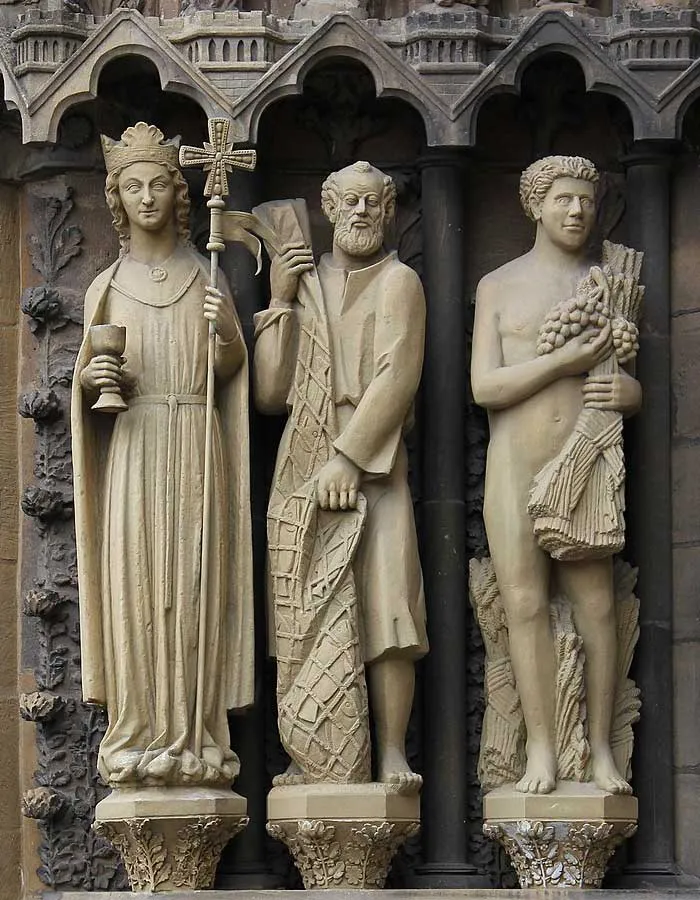
New ones designed by Jacques Le Chevallier and Alois Stettner were installed to replace the destroyed glass windows from the 1860s. The tabernacle and the canopy above it were designed and executed by the Cologne artist Hein Wimmer, as was a hanging cross with a corpus, which is no longer in the church.
On March 8, 1945, when he visited Trier, the American military chaplain Frederick McDonald collected shards of the old glass windows that had been destroyed in World War II. Using these shards, a glass picture was created in 2003 after McDonald’s death, which is part of the exhibition of the art project “Remembered Light: Glass Fragments from World War II, the McDonald Windows”.
The picture created by the American glass artist Peter Eichhorn, who was born and raised in Trier, shows Frederick McDonald inside the devastated church, is intended to remind people of peace and will be on permanent display in the Main Post Chapel of the Interfaith Center at the Presidio in San Francisco be.
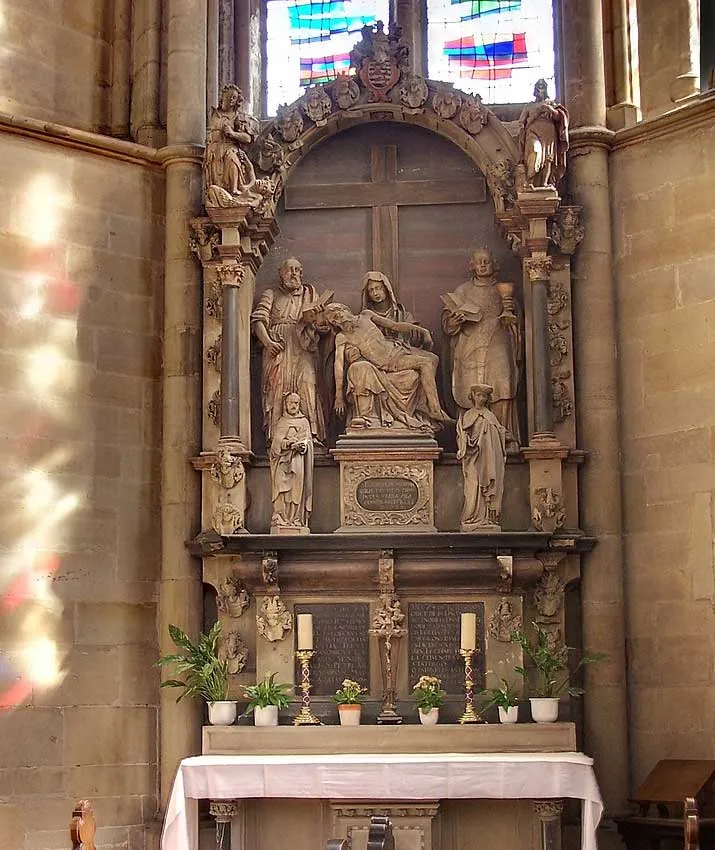
Architecture
In 1951, the Church of Our Lady received the title of Basilica minor from the Pope. The reason for this was the redesign of the sanctuary after the war, when the altar was placed in the middle of the church. In 1986, the church was included in the UNESCO World Heritage List together with the Trier Cathedral and the Roman cultural monuments in Trier and the surrounding area.
In 1992, the sculptures of the west portal, which are now in the museum, were placed back in their old location as casts; the long-lost pieces have been replaced by new creations by sculptors Theo Heiermann, Elmar Hillebrand and Guy Charlier. On the left robe next to Peter and Adam is Ecclesia, a medieval allegorical figure with the cross as a sign of Christianity and the chalice as a sign of the new covenant.
Synagogue, the figure opposite her, embodies the former attitude towards Judaism. Blindfolded, she turns away from John and his gospel. In her right hand she holds the Tablets of the Law, in her left a broken scepter as a sign of the supremacy of Christianity.
Heiermann’s new statue of Peter does not have the usual keys as an attribute, but a fishing net, according to the Gospel of Luke. A committee was responsible for the design of the new sculptures, which approached the artists with the most varied and precise wishes. During the development phase of Charlier’s Eva figure, for example, there were objections to the nose, which seemed a bit too pointed to one of the members, the buttocks should be more graceful and the hair falling over the shoulders smoother.
After more than three years of extensive restoration between July 2008 and September 2011, the Church of Our Lady was reopened on September 4, 2011. During the restoration, the original color scheme of the interior could be determined; it was reconstructed in one of the chapels on a window axis for demonstration purposes.
The important pieces of furniture from the 17th to the 20th century, some of which still showed wartime damage, were also carefully restored. Minor changes were made to the altar island by the architect Rudolf Schwarz’s widow, Maria Schwarz. The new glass windows in the so-called paradise were designed in 2011 by the Soest artist Jochem Poensgen.
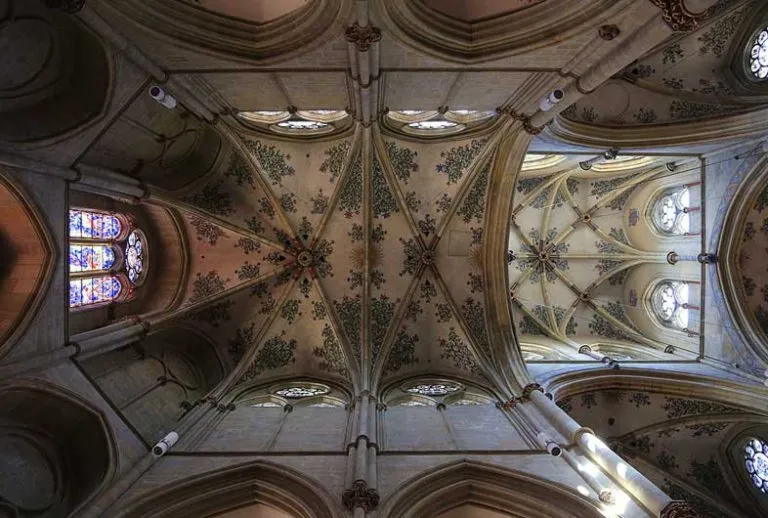
Organ
Until the Second World War, an organ from 1843, which had been built by the organ builder Heinrich Wilhelm Breidenfeld, stood in the Liebfrauenkirche on a neo-Gothic gallery above the west portal. The instrument had 32 registers on two manuals and pedal. This instrument was so badly damaged during World War II that it could no longer be repaired. After the end of the war, planning began for a new organ system, for which a new location had to be found because the neo-Gothic gallery had been removed when the church was restored.
A main organ was planned on the south side of the church room, on the ground floor, as a multi-storey instrument, and a two-piece choir organ. The main organ was not completed, only parts of the substructure were built and stood unfinished in the church for decades until they were dismantled again during the last restoration of the Liebfrauenkirche. But even the planned choir organ could only be partially implemented: it was built in 1951 with 15 registers on two manuals and pedal (Kegelladen ) inaugurated.
However, the free-standing console already had three manuals in order to be able to connect the planned main organ. In the course of the interior renovation in 2011, the organ was restored and received a two-manual console. This is now connected to the two-part organ via the church’s internal network and can therefore be set up in different places in the church.
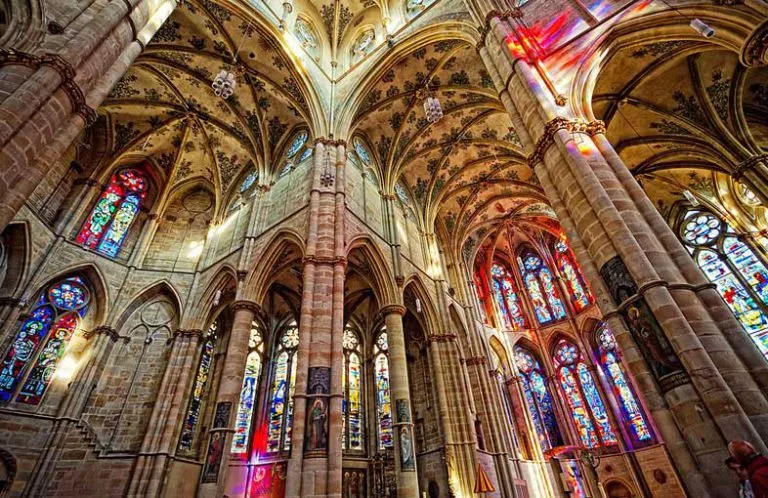
Bells
Shortly after Trier Cathedral received its new cathedral bell in 1951, the Otto bell foundry from Bremen-Hemelingen cast a four-part bronze bell for the Church of Our Lady. The bells have the following tones: a′ – b′ – cis′′ – e′′. The diameters are 943 mm, 840 mm, 748 mm, 629 mm. They weigh 510 kg, 360 kg, 260 kg, 160 kg.
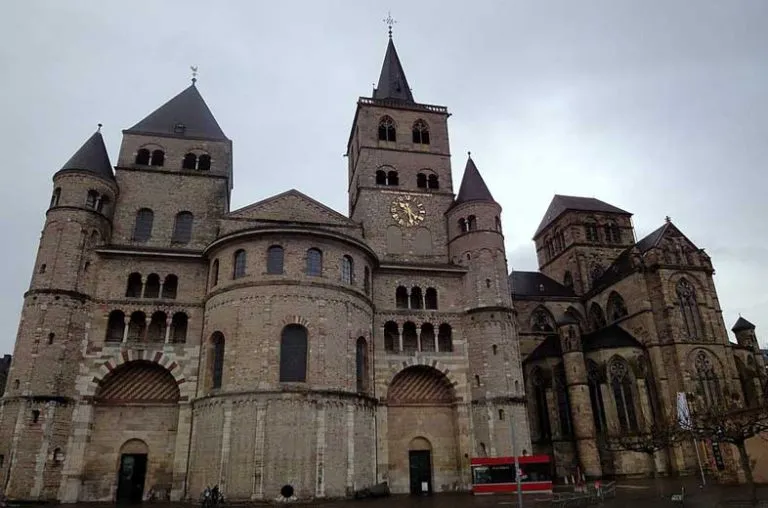
Feast Day - 1st May
The Feast Day of Liebfrauenkirche (Church of Our Lady) in Trier, Germany is celebrated on 1st May. This date is dedicated to the title of Our Lady, and it is a significant occasion for the church. The feast day is typically observed with special religious services, processions, and other festivities to honor the Virgin Mary and commemorate the religious heritage of Liebfrauenkirche.
Mass Time
Weekdays
Saturdays
Sundays
Church Visiting Time
Contact Info
Liebfrauenstr. 2, 54290 Trier, Germany.
Phone No.
Tel : +49 651 170790
Accommodations
How to reach the Church
Frankfurt–Hahn Airport is an international airport in the municipality of Hahn, Rhineland-Palatinate, Germany is the nearby Airport to the Church.
Trier, Hauptbahnhof Transit Stop in Trier, Germany is the nearby Train Station to the Church.

